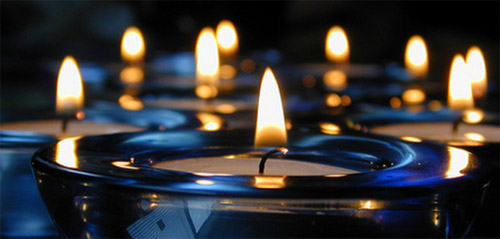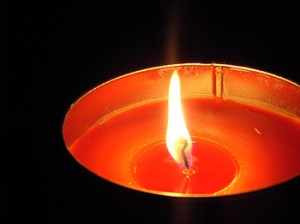
What could be more harmless than nice-smelling scented candles, right? No problem and no harm. Light one, let it flicker away, and allow the aroma to set the mood, right? There are dangers and risks associated with scented candles that may have you scrambling for greener alternatives to these apparently neutral everyday products.
Scented Candles – Risks You May Not Know
The average commercially produced candles contain substances, such as paraffin wax, which when burned release toxins into the air and can lead to health problems. Such scented candles may have been made using methods that are linked to refining crude oil and are comprised of fossil-fuel generating hydrocarbons. Carcinogenic toxins that may be released could even cause cancer over an extended period of time, and additional pollutants such as acetone (an ingredient in nail polish remover and paint thinner!), soot, lead, and benzene may all leave their mark, as well. Are your aromatic candles as attractive now?
According to the US Consumer Public Safety Commission, candles are producing more soot than ever before, and lead wicks still remain a problem in imported products up until the last couple years. So how does a discerning consumer avoid harmful candles and toxins?
Scented and Unscented – Healthy Candle Alternatives
Aside from devotedly reading labels and avoiding products made with perfumes and artificial dyes (found in most mass produced candles and fresheners), turning to soy-based candles or beeswax candles may be the best option. Beeswax candles are a fantastic natural alternative, and soy-based candles emit less soot than their paraffin-based cousins and are made from plant waste. If unscented candles won’t do however, make sure your aromatherapy/scented candles avoid synthetic mess and instead utilize plant essential oils. Some names to keep in mind: Vermont Soy Candles, Aveda, Blue Corn Naturals and Honeyflow Farm.
Also, for those that store their candles and may have purchased some before 2003, you may want to check your wicks for lead. There may be a small, thin wire in the center of your wick, and while this may not be lead due to the 2003 Consumer Public Safety ban, there may be zinc or tin elements that you may find undesirable, too. Make a thorough pass over your stored candles to ensure you’re not burning something that may contribute to compromising your health – or the environment.
For those looking for a little more information, here are a couple handy links to lead you on the right path towards healthier and greener candle choices: Pristine Planet and Soy Candles



nice article! nice site. you're in my rss feed now 😉
keep it up
nice article! nice site. you're in my rss feed now 😉
keep it up
you are on my rss reader now
Good stuff, this article will really help us specially health concerns.
Probiotic supplements have been shown, to, for example, help regulate the digestive system, strengthen the immune system and help reduce inflammation.
Therefore, I highly work for you stay away from ” fad diets ” ( low crab, low fat, low calorie, etc. )
acne treatment
Thanks for very nice pictures and blogs….
acne treatment
Also, for those that store their candles and may have purchased some before 2003, you may want to check your wicks for lead. There may be a small, thin wire in the center of your wick, and while this may not be lead due to the 2003 Consumer Public Safety ban, there may be zinc or tin elements that you may find undesirable, too. Make a thorough pass over your stored candles to ensure you’re not burning something that may contribute to compromising your health – or the environment.
That’s really a fantastic post ! i added to my favorite blogs list..
Informative post ,I have been reading your blog last couple of weeks and enjoy every bit. Thanks
Gourmet gift baskets
website for non profits
You look great now…I also thought about posting a shot of myself…but will wait, because now I
realize that my weight and stress of it has caused a medical condition I have to take care of…you
have been inspiring to me with the post and all!
because now I
realize that my weight and stress of it has caused a medical condition I have to take care of…you
have been inspiring to me with the post and all!
Beauty Solutions